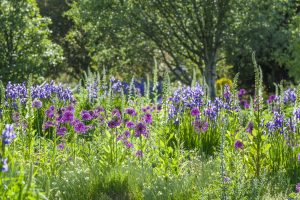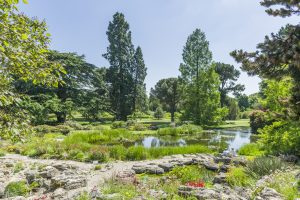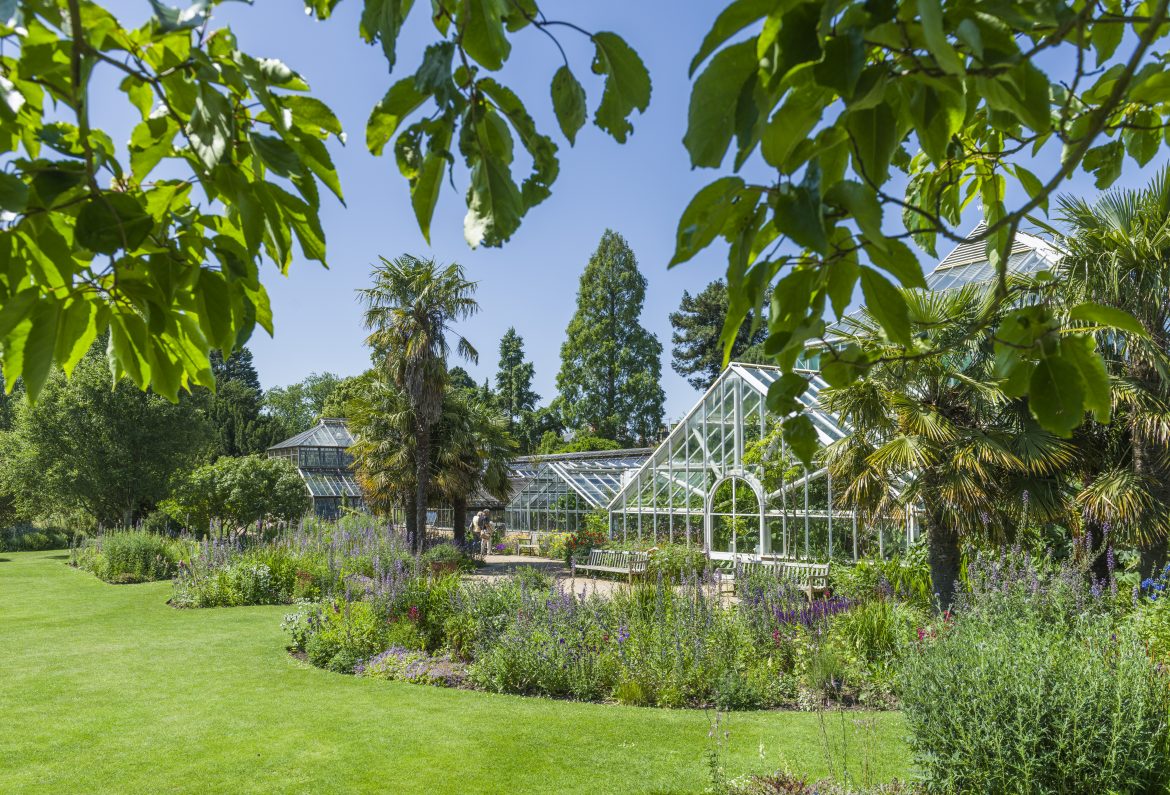We celebrate the past, present and future of a city icon – Cambridge University Botanic Garden
Words by Frances McNaughton
Founded by John Stevens Henslow, a biologist and Professor of Botany at the University of Cambridge, and designed by curator Andrew Murray, Cambridge University Botanic Garden has occupied its current 40-acre site for 175 years. Over time, it has evolved from a small, city-centre physic garden – for the benefit of medical students learning how to use plants as treatments – to a sprawling, beloved attraction, showcasing plants from around the world. Not only does it act as an extensive researching and teaching facility for the university, it’s also a wonderful amenity for the city, providing a beautifully landscaped open space to escape to. And after the year we’ve had, there’s no wonder it’s garnering renewed appreciation and reverence from both locals and visitors.
It was Henslow who first planted the seeds for the Garden we see today: he successfully persuaded the university of the need to transition to a much bigger site, citing the potential to study plants in their own right, including a collection of large, recently-discovered trees. This marked a clear shift from the traditional concept of a physic garden, and so, the Garden we see today started to grow.
The Garden’s western half was first laid out by Henslow and Murray in 1846, and is designed in Gardenesque style, featuring only one straight line – the Main Walk – with trees grouped together in families around the outside of a curving path. The eastern half was developed more than a century later in the 1950s, and is laid out to show scientific thinking, highlighting plant science research and different growing environments, together with demonstration gardens.
Enthusiasm to learn about science has grown
Today, the Garden is directed by Professor Beverley Glover, whose research covers the developmental programmes that build flowers, and how these have evolved, as well as understanding what attracts animal pollinators to them. “Over the last 175 years, we’ve seen a big increase in visitor numbers, and the enthusiasm of people to learn about the science of plants has grown. I hope that will continue, but it’s also clear that we will have an increasing role to play in climate change research and helping people understand the issues,” Beverley explains. “Our plantings and horticultural practices are also likely to be affected by changes in weather conditions, so we’ll have to think carefully about what we grow and how we look after the plants.”
Of all the current dedicated horticultural team, Pete Kerley knows better than anyone how dependent the Garden is on weather conditions – particularly rainfall. He first became part of the team during the hot, dry summer of 1976. “I think there was only one small bout of rain in September that year,” Pete recalls. “The main lawn was like a desert, and the lake had dried up. We had to transfer all the fish to the fountain to keep them alive.”

In many ways, it’s a wonder the Garden has been able to thrive to such an extent here in Cambridge, one of the driest parts of the country, but Pete has helped out for long enough to see the space truly flourish. Having started as a trainee – and only planning to stay for a year or two – Pete ended up, in his words, falling in love with the Garden. So, when offered a permanent position, he enthusiastically accepted, and has been very much involved with all of the goings-on since then.
In addition to an unrivalled collection of rare and endangered plants, the Garden contains different specialist sections, many of which are looked after by Pete. These include the Herbaceous Beds and Scented Garden, along with one of the jewels in the crown: “The Winter Garden came about just after I did, so I’ve watched that develop and evolve for over 40 years,” says Pete. “I’ve never been far from it, and for a while it was the only one in the country.”
As well as being responsible for much of the Garden’s maintenance, Pete was also the mind behind the Bee Borders, an idea that first germinated back in 2008. “The Bee Borders have been very successful,” Pete adds. “They’re really colourful, and feature some wonderful plant combinations.”
Looking ahead to the future, CUBG’s main priorities are to support plant science research and teaching, encouraging the use of the Garden’s collection, and developing displays to deliver this research to increasing visitor numbers – they keep the Garden going and growing.

“It is both humbling and an honour to reflect on, and celebrate, the significance of this anniversary, especially at a time when the Garden has taken on a new role in our local community during lockdown. We have had so many wonderful messages of gratitude and support for remaining open during the pandemic,” says Beverley.
“We’re working hard to meet the goals of our living collection strategy: bringing in new plants from around the world, increasing the proportion of our collection that’s rare in horticulture or endangered in the wild, and giving people the chance to engage with truly extraordinary plants.
My job is to make sure future generations enjoy it, as we do
“One thing this 175th anniversary reminds me of is that I am only a steward of this place. My job is to make sure that future generations enjoy it, just as we currently do thanks to the work of my predecessors,” she adds. “I hope I can do that as well as they did!”
Cambridge University Botanic Garden has evolved significantly in its long life, but the gratitude shown by both visitors and the team has very much remained the same. “In our anniversary year, we want to appreciate and reflect on what the Garden means to our local community,” says Beverley. “To our visitors from further afield and our social media followers, as well as our researchers, students, Garden guides, volunteers, members and staff – everyone who makes this a wonderful place to visit and work in, giving the Garden its unique spirit – thank you.”
Join in the anniversary fun by following @CUBotanicGarden on Twitter, and visit Facebook and Instagram to see memories and pictures from the archive. If you have memories of your own to share, get involved by using the hashtag #CUBG175 on social media.

